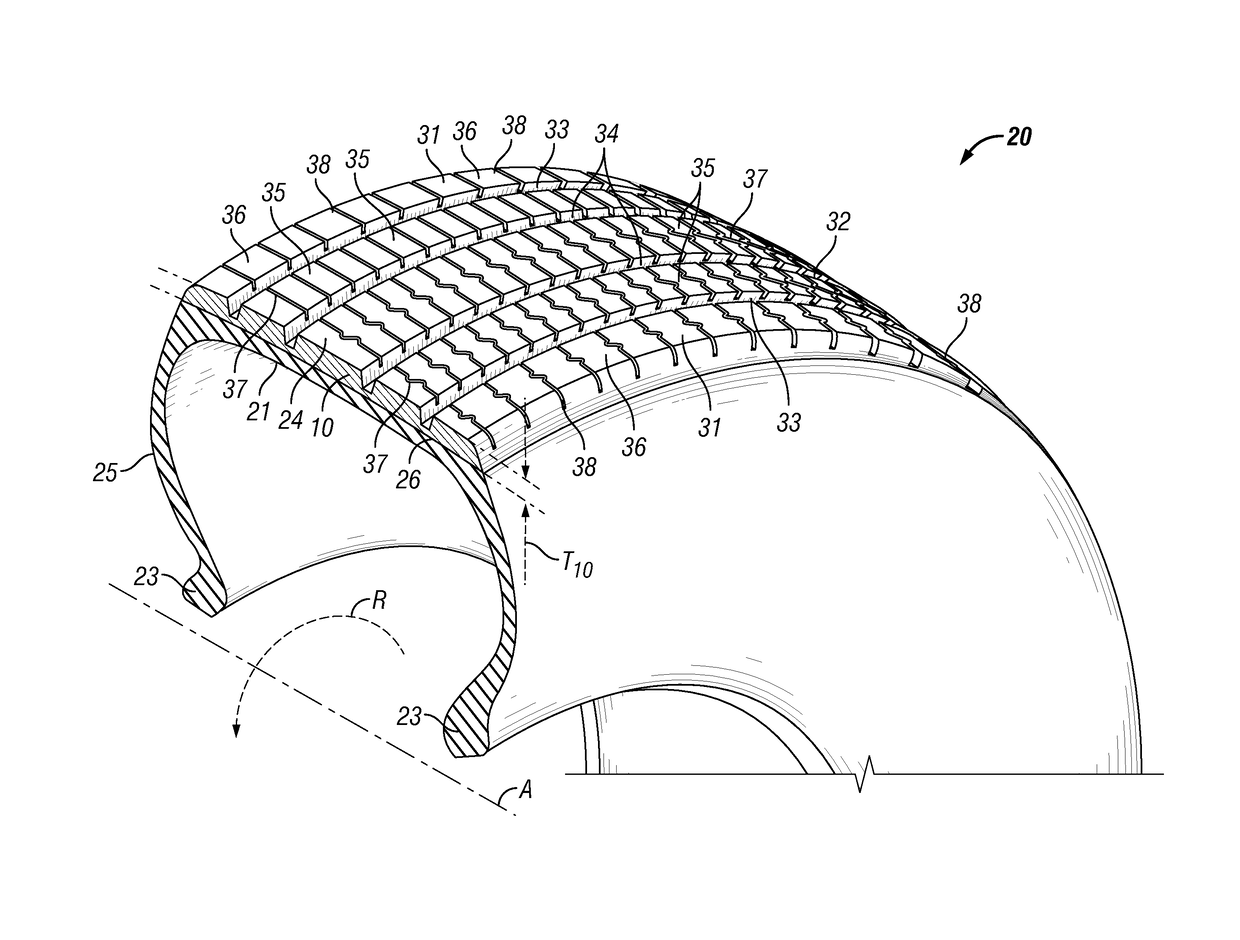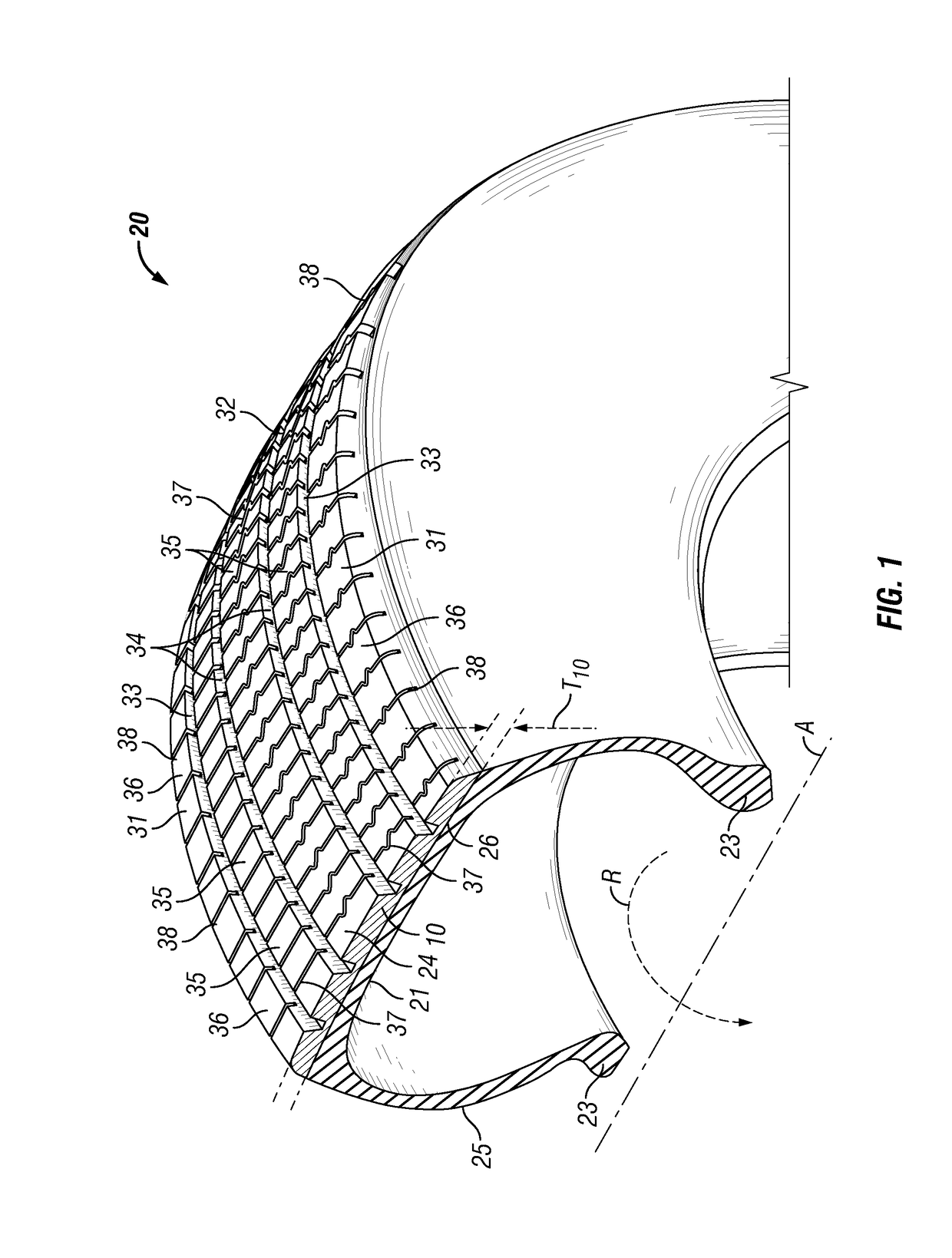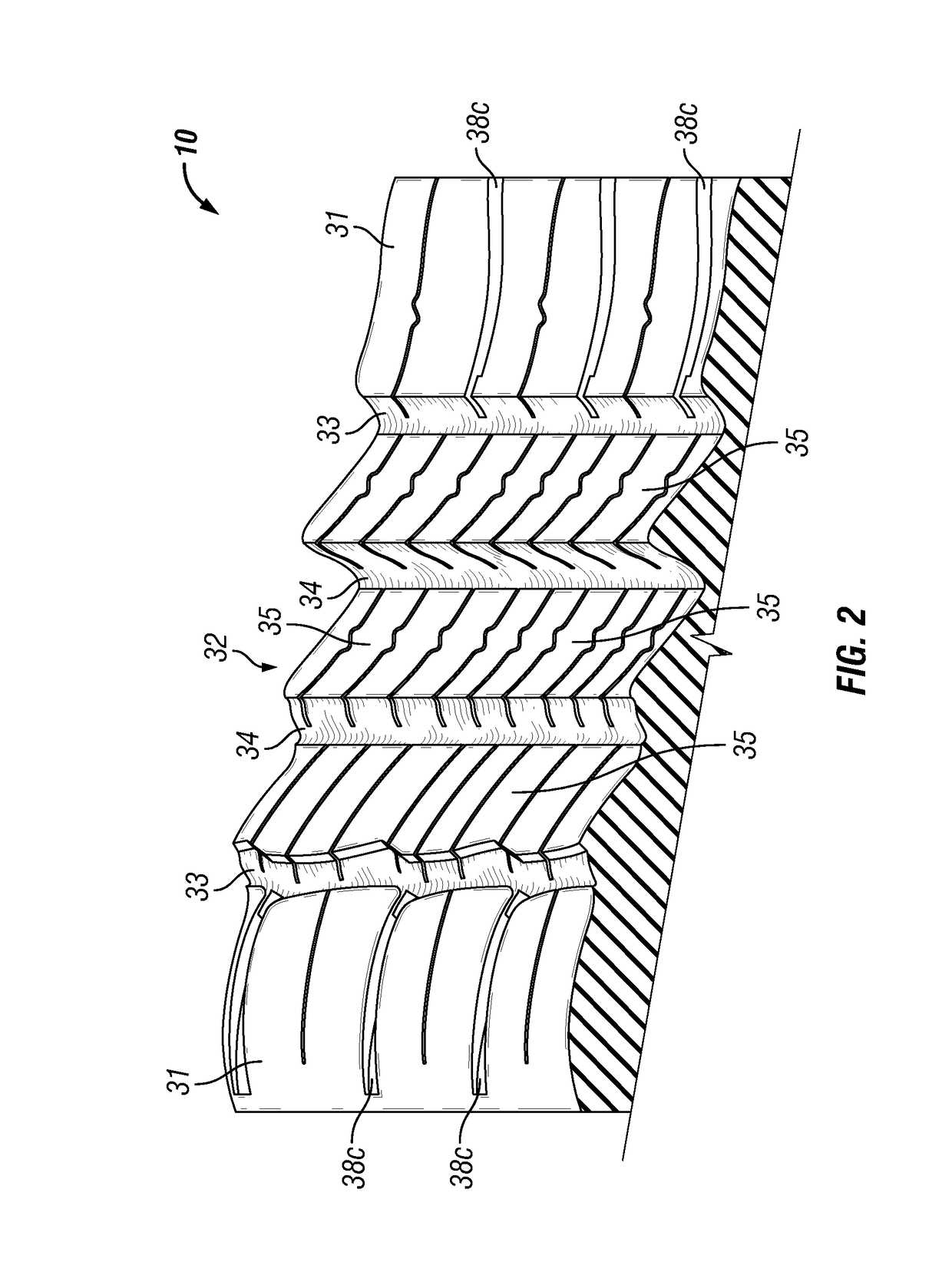Tire tread with improved dry/snow traction
a technology of tire treads and treads, applied in the field of tire sculptures and tread materials, can solve problems such as the decrease of dry braking performan
- Summary
- Abstract
- Description
- Claims
- Application Information
AI Technical Summary
Benefits of technology
Problems solved by technology
Method used
Image
Examples
example 1
[0092]Rubber compositions were prepared using the components shown in Table 1. The amount of each component making up the rubber compositions shown in Table 1 are provided in parts per hundred parts of rubber by weight (phr). The fSBR was functionalized with an amine group and the resin was a C5C9 resin; the silane coupling agent was Si69, the plasticizing oil was AGRI-PURE 80; the carbon black was N234 and the silica was Zeosil 1165.
[0093]The rubber formulations were prepared by mixing the components given in Table 1, except for the sulfur and the accelerators, in a Banbury mixer operating between 25 and 65 RPM until a temperature of between 130° C. and 170° C. was reached. The accelerators and sulfur were added in the second phase on a mill and then vulcanization was effected. The formulations were then tested to measure their physical properties, which are also reported in Table 1.
TABLE 1Rubber Formulations and Physical PropertiesW1F1F2F3F4F5F6FormulationsBR36202525252546SBR64fSB...
example 2
[0094]Tires were built using the rubber compositions W1 and F6. One comparative tire C1 having a tread formed of W1 had a tread thickness of 8.2 mm and had an average shoulder tread block length and an average central tread block length of 9 mm. The inventive tire T1 formed of F6 had a tread thickness of 7 mm and had an average shoulder tread block length of 16 mm and an average central tread block length of 8.2 mm. There were no lateral grooves and the sipes were full depth, i.e., to the depth of the wear bars. A second comparative tire T2 was built that was structurally inventive but made from witness material. The tires were mounted and tested in accordance with the procedures provided above. The results are provided in Table 2.
TABLE 2Tire ResultsC1T1C2Snow Traction100109104Dry Traction100106103
[0095]As can be seen, the tire T1 built having both the structural and materials in accordance with the disclosure herein had significantly improved snow and dry traction over the comparat...
PUM
 Login to View More
Login to View More Abstract
Description
Claims
Application Information
 Login to View More
Login to View More - R&D
- Intellectual Property
- Life Sciences
- Materials
- Tech Scout
- Unparalleled Data Quality
- Higher Quality Content
- 60% Fewer Hallucinations
Browse by: Latest US Patents, China's latest patents, Technical Efficacy Thesaurus, Application Domain, Technology Topic, Popular Technical Reports.
© 2025 PatSnap. All rights reserved.Legal|Privacy policy|Modern Slavery Act Transparency Statement|Sitemap|About US| Contact US: help@patsnap.com



